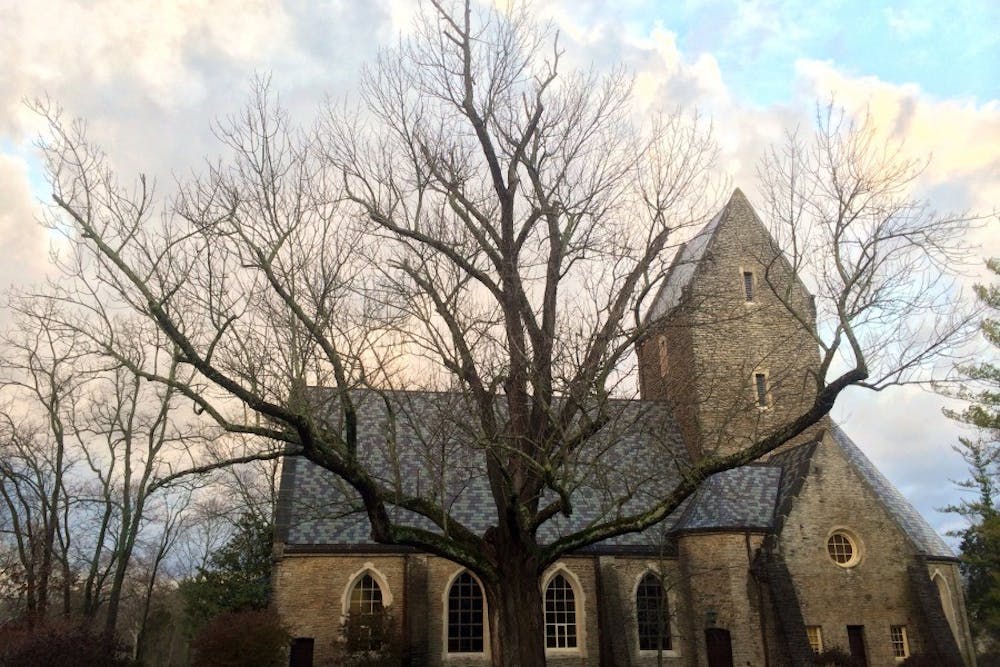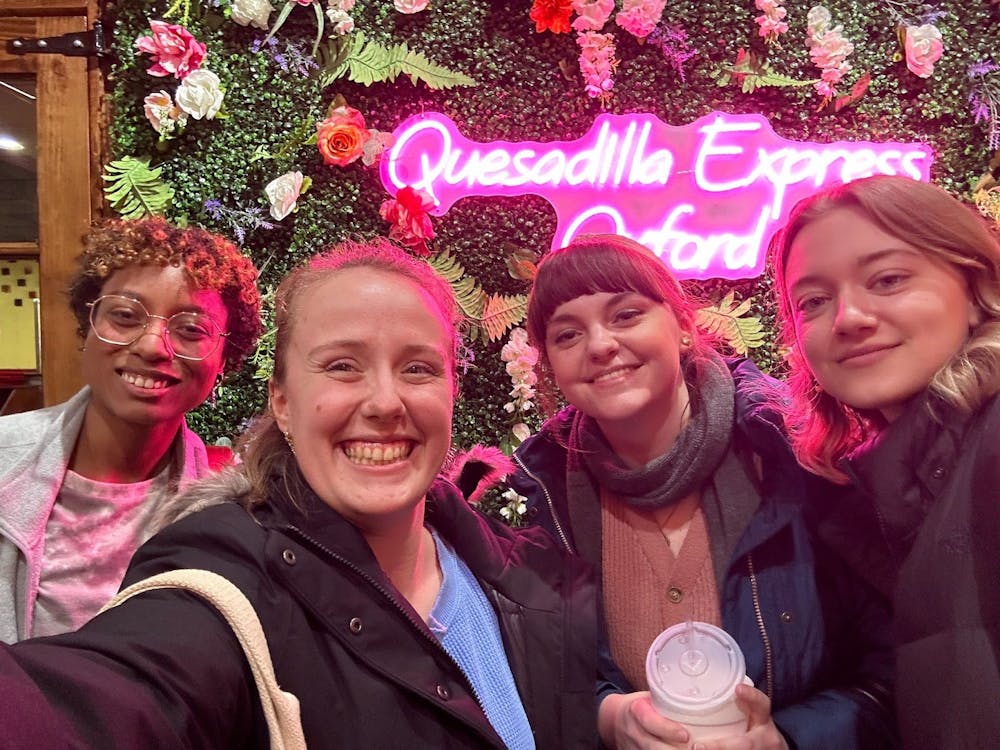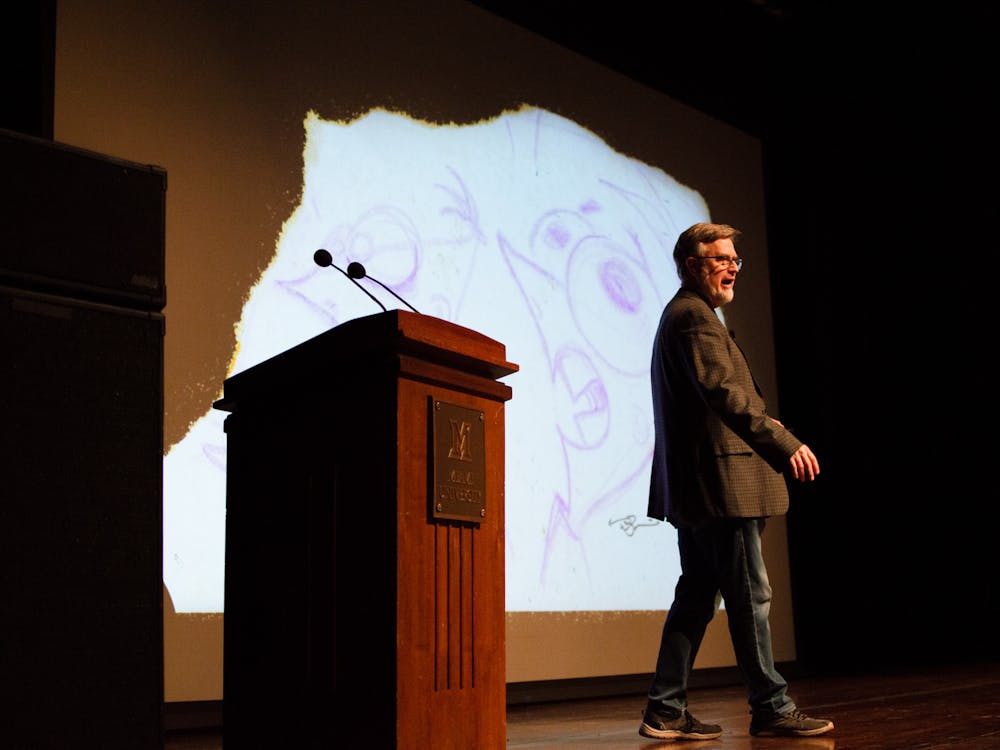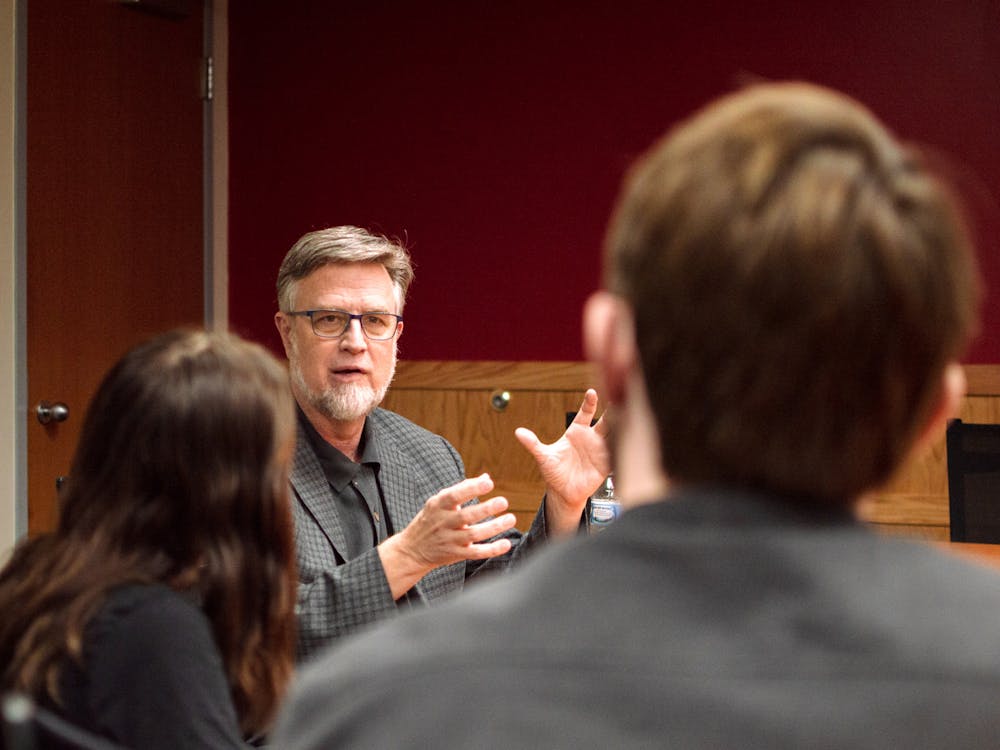An ash tree outside of Kumler Chapel on Western Campus is being protected by TREE-age, an insecticide that protects the tree from the emerald ash borer.
Contributed by Dan Garber
By Olivia Braude, Senior Staff Writer
They came in droves, burrowed in the wood of ships from the south of Asia. Smaller than a penny and the color of a precious gemstone, they killed tens of millions of ash trees across the Midwestern United States. By the time Miami University learned of the problem on campus, it was too late; the invasion of the emerald ash borer beetles has resulted in one of the worst tree devastations in campus history.
"Nothing has been as bad as the emerald ash," Dan Garber, a horticulturist at Miami, said.
"No, nothing," his co-worker, Vinny Cirrito, a landscape architect, repeated shaking his head.
The emerald ash borer is a non-native species, first discovered in the United States in Detroit, Michigan in 2002, according to American Forests magazine. The beetle lays its eggs under the bark of ash trees, and when the larvae hatch, they chew through the bark and eat the outer ring of sapwood used to transport water from the root of the tree to the canopy, Garber explained. Once the transport of nutrients from the roots is stopped, the tree dies and needs to be cut down quickly for safety reasons.
"When the ash tree dies, it becomes brittle and so falls over very quickly. That's a problem," John Keegan, the manager of the greenhouse and an instructor, said.
The university is concerned about student safety, which is a major factor for the removal of any trees on campus, Garber said. Other reasons include the natural death of the tree and whether it had been infested by an invasive species.
"We're not just going around cutting good, live trees," Garber said.
The case of Shideler Hall is an excpetion, where renovations have caused the removal of a number of viable trees, upsetting students and faculty alike.
"The loss of the trees around Shideler is deplorable," Amelie Davis, a professor in the Institute for the Environment and Sustainability, said. "While some were diseased, others were, I think, irreplaceable."
Enjoy what you're reading?
Signup for our newsletter
Cirrito said the decision to cut down the trees was not an easy one; it was taken to the administrative level before the conclusion was reached. But, he said, the university plans on replanting in the area once the construction is finished.
As for the 2,000 ash trees on Miami's campus, the emerald ash borer will continue to destroy them and not much can be done to prevent their removal.
"This will basically take away all the ash trees," Keegan said.
He said he estimates the university has already removed a considerable amount of ash trees, which, Keegan said, make up approximately 10 percent of the trees on campus.
"I would not be surprised if we've lost 100 because every week it would be, 'Oh we're cutting here, oh we're cutting there,'" Keegan said. He pointed out the ash tree in front of the CAB building, as well as one by Cook Field, that were recently removed.
The emerald ash borer is difficult to eradicate because none of the ash trees in the United States are resistant to it, and it has the ability to attack the trees while they are still young, even before they make seed, Keegan said.
"Had they caught it early enough, possibly they could have fought it, but because it is small and it does fly fairly well, it would have been difficult to stop," Keegan said.
Currently, Cirrito said, 23 ash trees, including one in front of Roudebush Hall and Kumler Chapel, are being treated with TREE-age, an insecticide injected at the base of the tree. The treatment is expensive - ranging from $100 to $200 per tree, Keegan said - but Cirrito said he hopes to use it on more ash trees in the next few years.
No one can know how many ash trees will need to be cut down, but neither Cirrito nor Garber denies the loss will be significant. The university is mitigating the situation by planting a variety of tree species so if another invasive insect attacks a particular type of tree, only that tree will be lost.
"We are doing a pretty aggressive tree planting program to try to reforest the campus," Garber said.
This is a good thing, according to Keegan, because the trees add to the overall attractiveness of the university.
"The number one reason that students come to this campus is the beauty of this campus and especially the beauty of the trees," Keegan, who believes one of the major needs of the university is to give the trees higher priority, said.
"The trees make the campus, there is simply no question," he said. "We need to do everything we can to protect them."
The outlook for the ash trees on campus, the first trees to display the striking orange, brown and golden leaves of fall, remains glum while the emerald ash borer is around. The best Cirrito hopes for is that the loss will bring about an abundance of different trees through replanting.
The red-brick, tree-lined Miami will always have to fight against forces of nature - not only invasive species, but climate changes and pollution as well - to keep the school green because, as Cirrito said, "The ash borer won't be the last."




